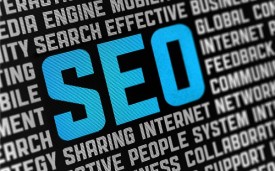by Michael Raisanen
A business can’t grow unless it’s been properly defined–and that’s the first step to creating a lasting brand.
Starting up a business is hard work, really hard work. Every day, the founders have to juggle mundane tasks: pitching new clients or investors, making sure there’s toner in the printer, sweet-talking clients, and managing contractors–all while having cash-flow-related panic attacks.
With all these daily commitments constantly eating up your precious time, it leaves little room for the important stuff, the reason you started the business to begin with: to do things your own way, by pursuing your own unique vision and building an organization around it. However, if a company is to grow healthily, it needs a defined identity. That’s easier said than done. The branding process is not complex in itself, but it does bring up difficult and complex discussions about who you are and what you want to achieve and how to express that through language, interactions, and design. First, you need to figure out who you are.

Define Who You Are
Most entrepreneurs have a clear idea in their head what they are aiming to accomplish. However, when asked what their new company does, most entrepreneurs will respond with a confused garble of abstractions, conceptual solutions, and often some tech jargon thrown in for good measure—an explanation that would outlast an elevator ride even in the highest tower of Dubai. That’s no good. Language needs to be refined, or you are dead in the water.
The most straightforward yet challenging way to do so is boil it down to one simple descriptive sentence. Avoid lofty super-pretentious proclamations like “We are changing the world by ushering in a new paradigm in social interfacing,” or some such nonsense. Don’t worry about not sounding “advanced” enough; simplicity is always king. Distilling everything down to one sentence is incredibly hard and takes hours upon hours of word picking and philosophical discussions in the conference room. Of course, that one sentence is not going to tell the whole story, but that’s not the point. The point is to train and discipline yourself to achieve brevity and clarity while communicating your brand. You should arrive at a sentence that summarizes what you do and provokes people to ask how and why.
The key to successful brand communications is a trifecta of brevity, clarity, and consistency. Avoid mission-statement sound bites at all costs; they are useless.
Differentiate
Yes, we’ve heard it a million times, and it seems obvious. Still, so many new companies keep falling into the trap of telling everyone how fantastic they are, what a great team they’ve built, and how awesome and cutting edge their technology is. Whey are trapped in their own ego bubble. Instead, what people want to hear is why your thing is better than the other things.
Avoid the Helicopter Mom Syndrome
Your company is your baby. But there’s no need to smother it by sticking your fingers in every single pot and pie. Building an organization means delegating tasks to other people in your organization. They were hired because of their expertise, so let them go ahead and do their jobs. Micromanagement slows down the process and diminishes the quality of work. Instead, focus on the organization as whole: How do projects get done? Quality control? Processes for hiring? Knowledge sharing? Company culture?
You might ask yourself what all this has to do with branding. In fact, it has everything to do with your brand. Early on, the people in your organization are the only thing your brand has got going except for a promise of future expectations. There is no history, no established product or service at this stage, so make double sure that you come across the way you want in every thinkable touch point. And let people do their thing.
Craft a Visual Identity
Once you have sorted out the more existential facets of the brand identity, you can start sorting out a visual identity: logo, website, fonts, colors, business cards, and letterhead. The great thing about design is that if applied correctly it can make your business instantly emit the values you want to communicate–trust, gravitas, innovation, quirkiness, luxury, whatever your brand identity dictates. However, do not attempt to design your own brand. It almost never works. Hire a professional who actually knows what he’s doing. It will pay off.
Existential Anxiety Is Normal
Building a start-up usually entails spending an unhealthy amount of time locked up with your partners strategizing, brainstorming, and planning ad infinitum. This is a necessary phase to make sure that you have kicked the tires from every angle and really polished the concept. However, a peculiar side effect of all this intense work is that sometimes you lose all judgement of what exactly you are trying to achieve. Is it good or bad? Does it even make sense? Am I the only person in this world that can see any value in what I’m doing? Am I crazy? Without any existing customers, you don’t have a real feedback loop to confirm if what you are doing is even valid.
Don’t be alarmed, this existential brand-identity anxiety is normal. You need a break. Talk to someone from the outside world who can confirm that you are still sane. Try out your descriptive sentence on some random people, show them your logo, and see how they react. It will bring back a sense of perspective.
Building a new brand is not easy, but it needs to be done. So, lastly, get at it!
***********
Michael Raisanen is the CEO and Co-founder of TIO Agency, a New York City–based creative agency specializing in creating successful marketing program












